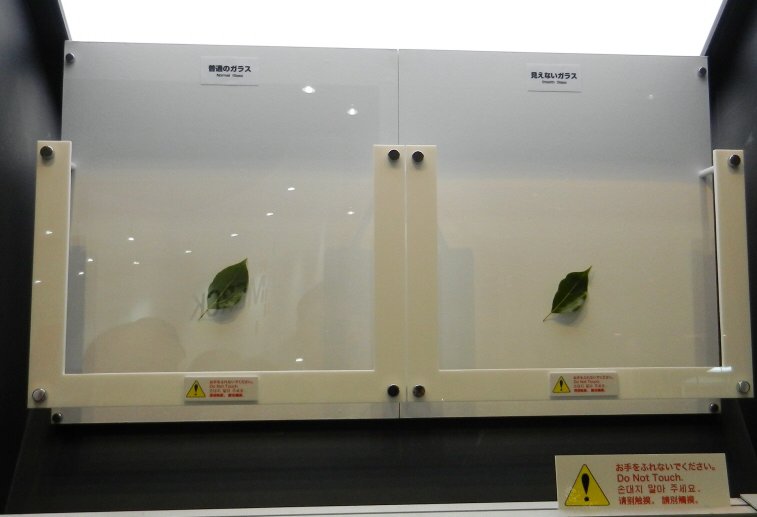Nippon Electric Glass Co Ltd developed a glass substrate that it calls “invisible glass” and exhibited it at FPD International 2011.

The company reduced the reflection of light so that light reflections can hardly be seen on the glass substrate. Many visitors at the exhibitions were said to be gazing at the invisible glass with surprised looks on their faces.
Nippon Electric Glass reduced the the reflection of light by forming an anti-reflection film on each of the front and back sides of the glass substrate. In the case of a normal glass substrate, about 92% of incoming light passes through it, and the rest 8% of the light is reflected on it. On the other hand, about 99.5% of incoming light passes through the new glass substrate. So, only about 0.5% of the light is reflected on it.
Nippon Electric Glass claims that the luminous reflectance of the substrate is 0.1% or lower. For the two anti-reflection films, the company used a total of 30 or more layers. And the thickness of each layer is controlled in increments of nanometers.
This type of glass could be used in vitrines, but I suppose it could also be used on the glass used on smartphone and tablet displays to dramatically the user experience in outdoor environments.
Source: http://techon.nikkeibp.co.jp/english/NEWS_EN/20111028/199970/

Jean-Luc started CNX Software in 2010 as a part-time endeavor, before quitting his job as a software engineering manager, and starting to write daily news, and reviews full time later in 2011.
Support CNX Software! Donate via cryptocurrencies, become a Patron on Patreon, or purchase goods on Amazon or Aliexpress




